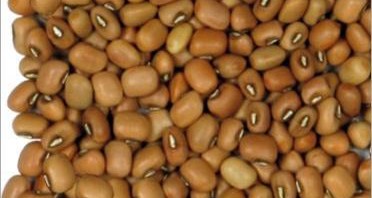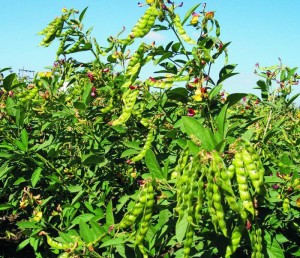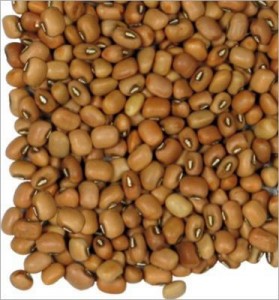
 Names
Names
Pigeon pea (Cajanus cajan), also known as Gandule bean, tropical green pea, kadios, Congo pea, gungo pea, gunga pea, fio-fio, mgbụmgbụ, or no-eye pea, is perennial member of the family Fabaceae.
Pigeon pea is a legume. It is the main source of lentils in India and a hardy, essential perennial shrub of great importance. It is one of the quintessential permaculture plants and food sources, having multiple functions in the garden – nutritious food source (especially for vegetarians and vegans), foliage is ideal livestock feed, shade plant over garden beds, high yielding shrub, nitrogen fixer, soil innoculator, excellent source of mulch, and a great chop and drop dig in green manure as seedlings.
 Food
Food
In India, pigeon peas are the main type of daal. They are also the brown lentils used in European cooking, popular in Italy, France and Spain.
Origins
The cultivation of the pigeon pea goes back at least 3,500 years. The centre of origin is the eastern part of peninsular India, where the closest wild relatives (Mansi) occur in tropical deciduous woodlands. Archaeological finds of pigeon pea include those from two sites in Odisha, Gopalpur and Golbai Sassan dating between 3,400 and 3,000 years ago, and sites in South India, Sanganakallu and Tuljapur Garhi, also dating back to 3,400 years ago. From India it traveled to East Africa and West Africa. There, it was first encountered by Europeans, so it obtained the name Congo Pea. By means of the slave trade it came to the American continent, probably in the 17th century.
Cultivation
Today, pigeon peas are widely cultivated in all tropical and semitropical regions of both the Old and the New Worlds. Pigeon peas can be of a perennial variety, in which the crop can last three to five years (although the seed yield drops considerably after the first two years), or an annual variety more suitable for seed production. Pigeon pea is a perennial which can grow into a small tree.
Pigeon peas are very drought resistant, so can be grown in areas with less than 650 mm annual rainfall. World production of pigeon peas is estimated at 46,000 km2. About 82% of this is grown in India. These days it is the most essential ingredient of animal feed used in West Africa, most especially in Nigeria, where it is also grown.
Nutrition
Pigeon Pea, raw Nutritional value per 100 g (3.5 oz):
Energy 1,436 kJ (343 kcal)
Carbohydrates 63 g
– Sugars 0
– Dietary fiber 15 g
Fat 1 g
Protein 22 g
Water 10.6 g
Vitamin A equiv. 18.6 μg (2%)
Thiamine (vit. B1) 0.6 mg (52%)
Riboflavin (vit. B2) 0.2 mg (17%)
Niacin (vit. B3) 3.0 mg (20%)
Pantothenic acid (B5) 1.3 mg (26%)
Vitamin B6 0.3 mg (23%)
Folate (vit. B9) 456 μg (114%)
Vitamin C 0 mg (0%)
Vitamin E 0 mg (0%)
Vitamin K 0 μg (0%)
Calcium 130 mg (13%)
Iron 5.2 mg (40%)
Magnesium 183 mg (52%)
Phosphorus 367 mg (52%)
Potassium 1392 mg (30%)
Zinc 2.8 mg (29%)
Availability
Pigeon pea is now a widespread shurb grown in Australia. While it prefers warmer subtropical areas, it grows well in colder and drier areas also. Seeds are readily available from most seed suppliers, organic garden clubs, permaculture groups, etc. Like most legumes, seeds sprout very easily and fast. Pigeon pea seem to take a little while to get settled in the ground once sprouted, but once around 40-50cm high, they grow into small trees quite rapidly.
